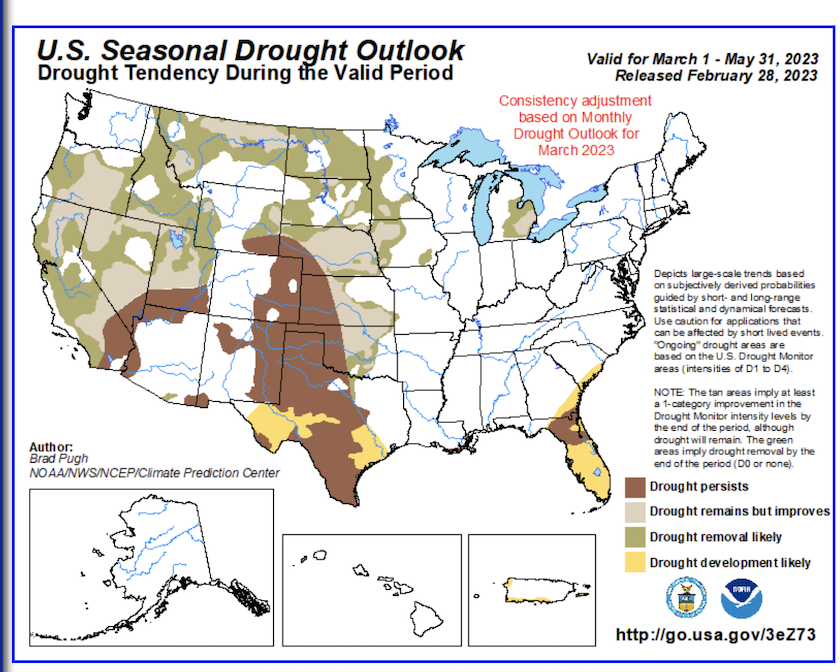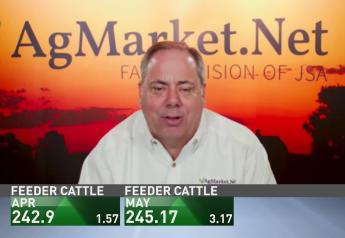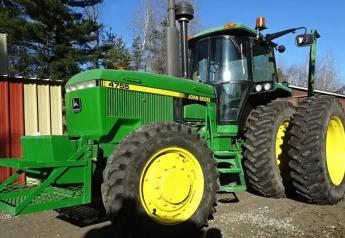Push for Permanent Disaster Aid? Sorghum Producers Seek to Secure Stronger Safety Net in the Farm Bill

Farmers in the Southern Plains are looking at another year of drought. With winter dryland crops dwindling by the day, area farmers have growing concerns about having enough moisture to plant their 2023 spring crops. Now, groups like National Sorghum Producers (NSP) are pushing for either permanent disaster assistance or other changes to strengthen the safety net within Title 1 of the Farm Bill.
As growers gather at the 2023 Commodity Classic this week, it’s a story of moisture extremes for farmers across the U.S. Record snowfall continues to call in California, improving the water outlook for irrigation this year. The upper Midwest has also been hammered by continuous snowfall this winter.

It’s a stark contrast from the Plains. Already faced with the most severe levels of drought on the U.S. Drought Monitor, NOAA’s seasonal drought outlook paints a dreary picture with forecasts for drought persisting through spring. However, it’s the concern longer-term that’s also driving NSP’s priorities within the 2023 Farm Bill. Tim Lust, CEO of NSP, wants to see legislators strengthen the safety net within Title One of the Farm Bill, including more permanent disaster aid.
“When we look at the number of dollars that have been spent an ad hoc disaster over the last six years, there are ways, without spending the total amount of dollars that we have spent over the last six years, that we could do some things in Title 1 to really provide some extra dollars there to provide a safety net and to get us out of this situation of an every year disaster,” says Lust.
Lust says as the Farm Bill sits today, reference prices don’t cover cost of production increases that farmers across the country have seen the past two years. He says that’s further proof there’s not an adequate safety net in place today.
“As always, there are caveats about how that's done,” says Lust. “It can’t impact crop insurance negatively, and there are some of those cornerstones that certainly are not negotiable, but the goal is how do we get that safety net for our growers going forward.”
NSP is pushing for the two Agriculture Committees to find more funding for an improved safety net within the new Farm Bill, but Lust says NSP isn’t recommending to Congress how they should craft those programs just yet.
“Whether that is a disaster assistance, whether that's an increase in reference price, there are three or four different ways that you could provide that safety net," says Lust. “At this point, we're not really at this point saying exactly what that is, other than to say, it is needed.”
Issues with 2022 Ad Hoc Disaster Relief
Sorghum producers have plenty of fuel to back his push for an improved safety net for farmers. Last year, sorghum producers saw the worst yields since 1960. Farmers aren’t only revising some of their acreage plans this year due to the moisture situation in the Plains, they’re also still trying to financially recover from the scars of last year’s drought.
“Obviously, we were very happy to see legislation in the December bill that provided assistance for 2022,” he says. “One of the things that we have certainly been talking about is how that is implemented, and what that looks like. The ERP 1 model that was used for ‘20 and ’21 worked very well. Our board and leadership has grave concerns about the ERP Phase 2 methodology and what that looks like, and so certainly a lot of concerns over how exactly the '22 disaster is implemented.”
Lust and sorghum farmers aren’t alone in their concerns over how those Emergency Relief Program Phase 2 payments. The program is ad hoc and distributes disaster aid for losses from weather events like drought. Changes for Phase 2 require farmers to submit their tax information and the payment is capped at $2,000. Farmers are reluctant to hand over such personal financial information over to the government for a payment that doesn’t begin to cover the 2022 financial losses in areas that need it most.
A group of Senators sent a letter to U.S. Agriculture Secretary Tom Vilsack last week and voiced deep concerns about ERP 2. Nineteen GOP members of both the House and Senate urge USDA to reconsider the methodology used for ERP Phase 2. The legislators say the process is extreme and the requirement for farmers to hand over their personal tax records shouldn’t be a requirement, as the information doesn’t necessarily correlate to crop losses by crop year, which they claim makes Phase 2 less precise.
Sorghum as the Ideal Crop for Climate Solutions
There’s an expectation for farmers to possibly plant more sorghum acres in the drought areas this year. Weather is a gamble, but as farmers try to find ways to still grow a crop, sorghum is an attractive option since it requires less water compared to other row crops like corn.
Lust says sorghum’s hardiness also provides an opportunity to answer USDA’s call for more climate-smart agriculture practices across the country. Lust and sorghum farmers know it’s a crop that doesn’t require as much water, but now they dig into the data of not only the inputs of sorghum, but also the valuable outputs of a grain that can be used for feed and food.
“We were blessed to be one of the groups that was announced as a potential awardee,” says Lust. “We are not through that contract process yet, so it's not final, but working almost daily with USDA to finalize that contract process.”
In total, USDA is in the process of finalizing $3 billion worth of climate-smart commodities grants. The recipients are a combination of both public and private groups, all working toward a common goal.
“In our case, it's working with our growers, looking at climate-smart practices, and looking at how those transform into markets,” explains Lust. “Whether those be our biofuel markets, or whether those be some of our food markets, it’s about how we look at that being monetized and what those future market opportunities could be.”
Lust says that’s all supported by collecting the data from all that research, which starts at the farm level.
“Obviously, there is a significant data collection component to this, and really gives our leadership, our members, and our producers in general, the opportunity to document and learn a lot about our crop and what really is happening on the ground,” says Lust. “Certainly, we've done some small-scale projects with universities, we've done a few individual farms, but we've never done anything this broad scale.”
Once the details of the grant are finalized with USDA, Lust says NSP will immediately get to work, uncovering even more reasons why sorghum is a sustainable solution for the call to bring more climate-smart practices and products to the market.
And today, Lust points out sorghum is already playing a more vital role in U.S. food programs, showing just how versatile sorghum truly is.
“One of the things that we've certainly worked on and prioritized the last several years is adding sorghum into the USDA feeding programs,” he says. “We’re excited to have sorghum approved to be a part of those programs and a lot of ongoing work, particularly in the breakfast side, about how whole grain sorghum moves into the breakfast side of school breakfast and school lunch programs. So, we’re excited about what some of those opportunities are and with many of the health attributes, and wholegrain attributes, that sorghum checks the box on.”
Related Stories:
Farmers in the Plains Can't Escape Growing Financial Scars From the Drought
ASA CEO: Renewable Diesel Could Drive a New Era for Soybean Demand, But EPA Needs to Rethink the RFS
The Cost of a Farm Bill: 2023 Row Crop Priorities
Commodity Programs Might See a 12% Cut in the Proposed $1 Trillion Farm Bill







